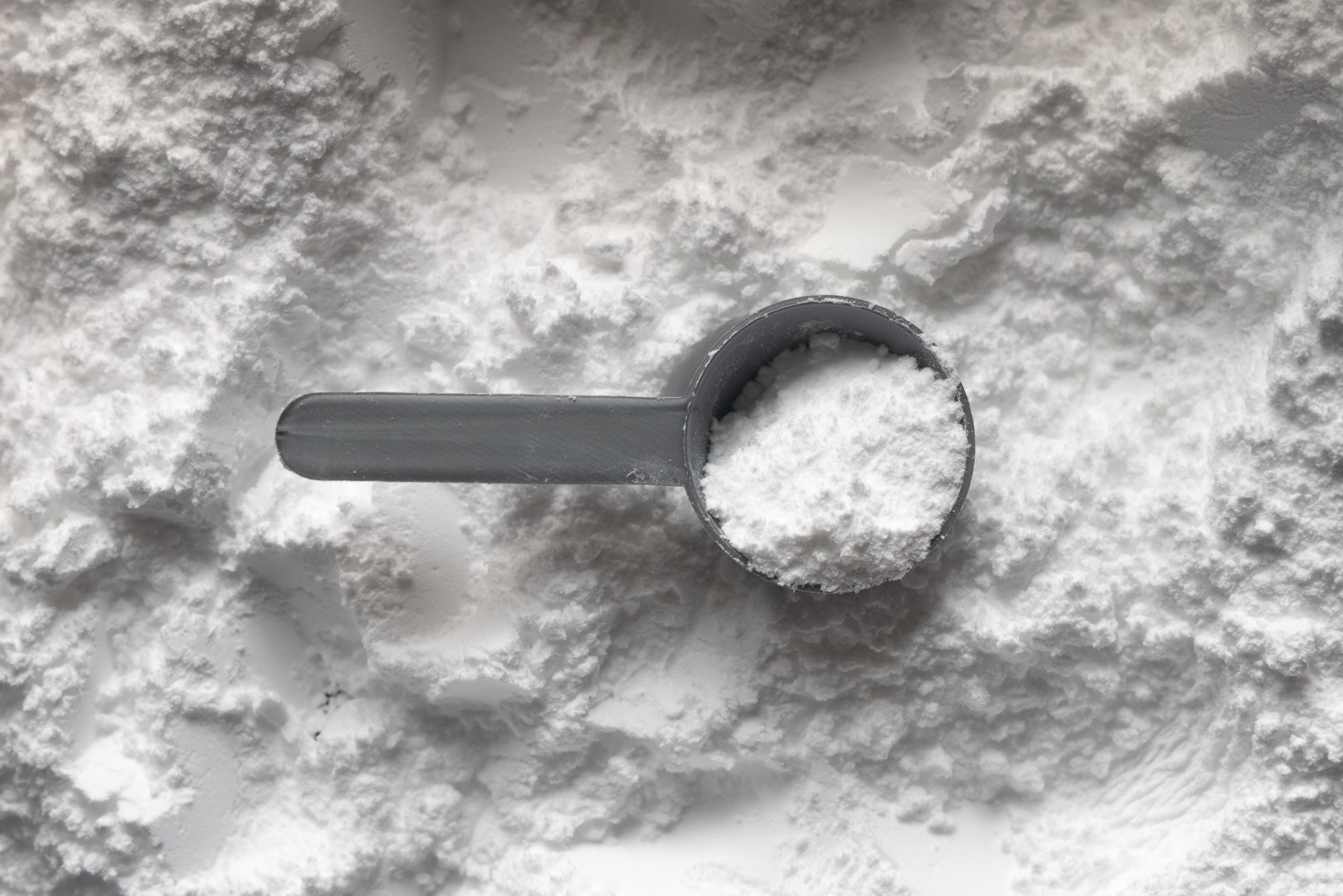Your quality of Life
Healthy aging
For more than a century, life expectancy has continued increasing in many countries. People expect to live longer while remaining in good health and maintaining an active lifestyle. At the same time, the aging population is a rapidly-growing consumer segment and will grow even more in the future.(1)
As a consequence of the growth in the aging population, countries around the world are witnessing an alarming rise in chronic issues, nearly half of which are bone and joint-related.(2)
In the course of its lifetime, the human body is continuously subjected to different “shocks and efforts”, which affect the supportive elements of the body, such as bones and joints. Therefore, a number of skeletal problems may occur with aging.
Balanced nutrition is essential for the prevention of chronic issues, but also to maintain a healthy body and ensure its proper functioning.


Osteoporosis and bone metabolism
Osteoporosis is a condition of bone fragility with an increased susceptibility to fracture. It weakens bones and increases the risk of them breaking. Occurring mainly in elderly people and postmenopausal women, osteoporosis is the most common skeletal issue in the world and responsible for millions of bone fractures every year.
Bones form the supportive skeleton of our body and they are mainly composed of mineral matrix and organic matrix. Collagenous protein, mainly type I collagen, represents 85 to 90% of the organic matrix. Collagen is responsible for ductility, while the mineral matrix makes bones stiff. Alterations to collagen properties can therefore affect the mechanical properties of bones and increase fracture susceptibility.
Bones are living matter and undergo constant remodeling throughout our life. This bone-remodeling process is aided by specific cells, namely osteoclasts for resorption and osteoblasts for bone formation.
The imbalance of bone remodeling could lead to osteopenia and eventually osteoporosis, characterized by a decrease in bone mass and density.
Collagen peptide, a natural ingredient for bone and joint health
Looking for more natural and comfortable ways to continue daily life activities is a global trend. Besides medical solutions with side effects in long-term therapy, consumers are turning to natural health supplements, as they offer greater health benefits.
One of the most well-known natural ingredients for bone and joint health is the collagen peptide, obtained from naturally-derived collagen. As the most abundant protein in mammals, collagen protein makes up about 30% of the body’s protein.
By enzymatically breaking the collagen down into smaller peptides, collagen peptides are obtained. These bioactive peptides can be absorbed rapidly into the blood stream and act on the spot.
Collagen peptides help maintain strong bones and healthy joints.


Collagen peptides support healthy joints
Scientific research suggests that a daily oral intake of 10g collagen peptides may have positive effects on joints and alleviate pain, maintain mobility and minimize disability. A major impact is witnessed on activity-related pain after 4 to 6 months of supplementation(9,10,11).
In vitro studies report on the positive effect of orally-administered type I collagen peptides with molecular weight distribution of 2-10 kDa on the extracellular matrix synthesis of collagen, proteoglycan and elastin by chondrocytes in cartilage(12). There is also evidence stating the potential anti-inflammatory effect of collagen peptides(16).
This results in decreased cartilage tissue degeneration and, ultimately, reduced pain and increased mobility.
Scientific studies suggest that oral ingestion of collagen peptides helps maintain strong bones and healthy joints.

In bones, the activity of osteogenesis is stimulated by small collagen peptides while the bone resorption is reduced.
This leads to beneficial effects such as increased bone-mineral density and bone strength.
In joints, collagen peptides stimulate the extracellular matrix synthesis, thus rebalancing cartilage buildup and breakdown, resulting in improved mobility, reduced stiffness and pain.
In addition, it limits swelling of the joints.

References
1. Euromonitor International, (2019). Top 10 Global Consumer Trends for 2019
2. Dubourg,G.,(2013).Targeting bone health. The world of food ingredients, February 2013.
3. Kim, H.K., Kim, M.G. and Leem, K.H. (2013). Osteogenic activity of collagen peptide via ERK/MAPK pathway mediated boosting of collagen synthesis and its therapeutic efficacy in osteoporotic bone by back-scattered electron imaging and microarchitecture analysis. Molecules, Vol. 18, 15474-15489.
4. Leem, K.H., Lee, S., Jang, A. and Kim, H.K. (2013). Porcine skin gelatin hydrolysate promotes longitudinal bone growth in adolescent rats. Journal of Medicinal Food, Vol. 16, Iss. 5, 447-453.
5. Kim, H.K., Kim, M.G. and Leem, K.H. (2014). Collagen hydrolysates increased osteogenic gene expressions via a MAPK signaling pathway in MG-63 human osteoblasts. Food & Function, Vol. 5, Iss. 3, 573-578.
6. JunLi Liu, Bing Zhang, ShuJun Song, Ming Ma, ShaoYan Si, YiHu Wang, BingXin Xu, Kai Feng, JiGong Wu and YanChuan Guo. (2014). Bovine collagen peptides compounds promote the proliferation and differentiation of MC3T3-E1 pre-osteoblasts, Vol.9, Iss. 6, 1-6.
7. Adam, M., Spacek, P., Hulejova, H., Galianova, A. and Blahos, J. (1996). Postmenopausal osteoporosis. Treatment with calcitonin and a diet rich in collagen peptides. Casopis Lékaru Ceských, Vol. 135, Iss. 3, 74-78.
8. Martin-Bautista, E., Martin-Matillas, M., Martin-Lagos, J.A., Miranda-Leon, M.T., Muñoz-Torres, M., Ruiz-Requena, E., Rivero, M., Quer, J., Puigdueta, I., and Campoy, C. (2011). A nutritional intervention study with hydrolyzed collagen in pre-pubertal Spanish children: influence on bone modeling biomarkers. Journal of Pediatric Endocrinology and Metabolism, Vol. 24, Iss. 3-4,147-153.
9. Trč, T. and Bohmová, J. (2011). Efficacy and tolerance of enzymatic hydrolysed collagen (EHC) vs. glucosamine sulphate (GS) in the treatment of knee osteoarthritis (KOA). International Orthopaedics, Vol. 35, Iss. 3, 341-348.
10. Benito-Ruiz, P., Camacho-Zambrano, M.M., Carrillo-Arcentales, J.N., Mestanza-Peralta, M.A., Vallejo-Flores, C.A., Vargas-López, S.V., Villacís-Tamayo, R.A. and Zurita-Gavilanes, L.A. (2009). A randomized controlled trial on the efficacy and safety of a food ingredient, collagen hydrolysate, for improving joint comfort. International Journal of Food Sciences and Nutrition, Vol. 60, Iss. 1, 99-113.
11. Clark, K.L., Sebastianelli, W., Flechsenhar, K.R., Aukermann, D.F., Meza, F., Millard, R.L., Deitch, J.R., Sherbondy, P.S., and Albert, A. (2008). 24-Week study on the use of collagen hydrolysate as a dietary supplement in athletes with activity-related joint pain. Current Medical Research and Opinions, Vol. 24, Iss. 5, 1485-1496.
12. Schunck, M., Schulze, C.H. and Oesser, S. (2006). Disparate efficacy of collagen hydrolysate and glucosamine on the extracellular matrix metabolism of articular chondrocytes. Osteoarthritis and Cartilage, Vol. 14, Suppl. 114, 199
13. Porfirio, E., and Bernardes Fanaro, G. (2016). Collagen supplementation as a complementary therapy for the prevention and treatment of osteoporosis and osteoarthritis: a systematic review. Rev. Bras. Geriatr. Gerontol., 19(1):153-164
14. König, D., Oesser , S. , Scharla, S., Zdzieblik, D. and Gollhofer, A. (2018). Specific Collagen Peptides Improve Bone Mineral Density and Bone Markers in Postmenopausal Women—A Randomized Controlled Study. Nutrients 10, 97.
15. Kumar, S., Sugihara, F., Suzuki, K., Inoue, N. and Venkateswarathirukumar, S. (2014). A double-blind, placebo-controlled, randomised, clinical study on the effectiveness of collagen peptide on osteoarthritis. J Sci Food Agric.
16. Hartog, A., Cozijnsen, M., de Vrij, G. and Garssen, J. (2013). Collagen hydrolysate inhibits zymosan-induced inflammation. Experimental Biology and Medicine.


